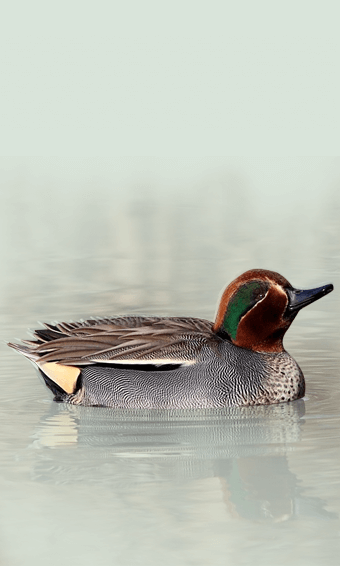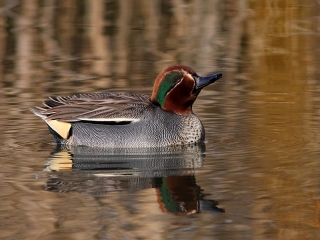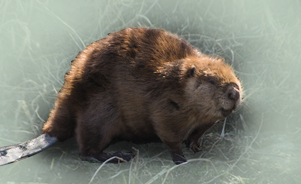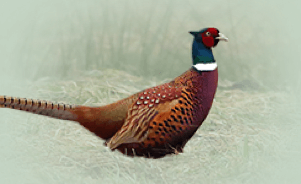The Eurasian Teal or Common Teal Anas crecca

Features
The Eurasian teal or common teal is the smallest of all ducks that can be seen in Slovenia.
| Species | Bird |
| Living space | Swamp |
| Size | 34 - 38 cm |
| Weight | 320 - 360 g |
Description
The Eurasian teal or common teal has protective coloring and is perfectly concealed in thick water or ripe vegetation thanks to its brown grainy pattern. It is difficult to distinguish them from the females of other types of ducks. Their size and glittering green 'windows' on the upper halves of their wings just next to their bodies stand out the most. The males have a 'box' of the same color, but unlike the females, has very striking colors. Their marbled hips look gray from afar and their pale yellowish chests and abdomens are speckled with dark spots. At the time of reproduction, their heads and necks are marked red brown and a green line with a thin yellow border extends across their eyes and temples towards their napes. Their backs and wings are gray and along their hips a white line can be seen, which is also emphasized by the black mark below it. The males can easily be recognized from afar by their black-trimmed yellow patch of feathers under their tails. The wingspan of adult birds ranges from 53 to 59 cm. The Eurasian teal or common teal is a duck that is active during the day, which eats during the day when nesting. During the coldest parts of the year, particularly during the hunting season, they usually search for food at night. In the spring and summer, they mainly feed on food of animal origin such as insects, small crustaceans and other aquatic invertebrates. In autumn and winter, the Eurasian teal or common teal focuses more on the seeds of aquatic plants (macrophytes), grasses, sedges and the seeds of grains that remain in the fields. Their nests are set in hollows in the ground. They usually hide in swampy vegetation or under shrubs near water. They nest from April or May to July and prefer shallow, heavily overgrown bodies of water near forests. They do not nest only in the appropriate lakes and rivers, but also in wetlands with a mix of sea and fresh water. In Slovenia, the Eurasian teal or common teal is a very rare breeder and is recognized as a highly endangered species.The Eurasian Teal or Common Teal
on the habitat Temenica
They are present in the Temenica year round.

Features Temenica (3)
SPECIAL ogr.




